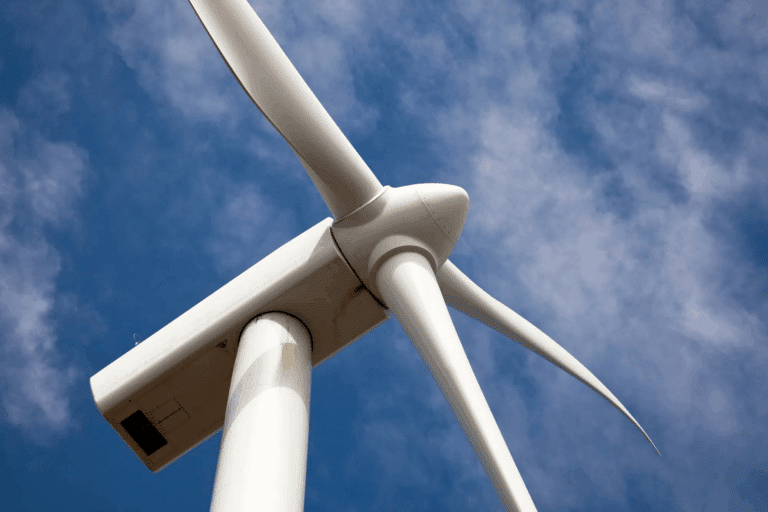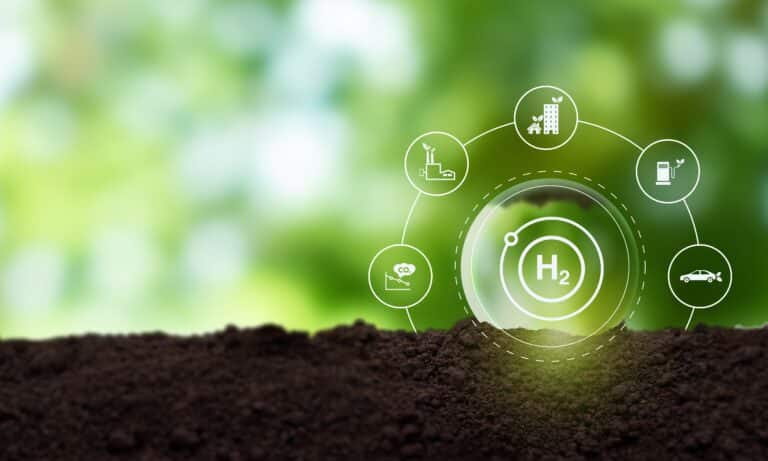The US led the world to reach a huge climate deal. Then, it switched sides.
Ten years after nations adopted the Paris Agreement, its objectives are in jeopardy amid rising climate pollution and a political backlash against clean
Current Access Level “I” – ID Only: CUID holders, alumni, and approved guests only
Fact Sheet by Emeka Ochu, Sarah Braverman, Griffin Smith + 1 more • June 17, 2021
This fact sheet represents the research and views of the author. It does not necessarily represent the views of the Center on Global Energy Policy. The piece may be subject to further revision.
Contributions to SIPA for the benefit of CGEP are general use gifts, which gives the Center discretion in how it allocates these funds. More information is available at Our Partners page. Rare cases of sponsored projects are clearly indicated.
Hydrogen can play an important role in decarbonizing global energy systems, both in supplying low-carbon fuels and feedstocks and in using them to deliver products and services. Challenges limit the speed and scale of increased production and use of low-carbon hydrogen, including market economics and infrastructure constraints. Enhanced government regulatory and market aligning policies could overcome these limits and encourage private sector investment in low-carbon hydrogen production and use.
Many nations have taken actions to increase investment to scale hydrogen production, from roadmapping to infrastructure. For example, Chile’s National Green Hydrogen Strategy[1] outlines the country’s policy to invest in hydrogen infrastructure to take advantage of its abundant wind and solar resources. Several other countries, such as Australia,[2] Japan,[3] and Canada,[4] and the EU[5] have also published hydrogen strategies that propose grants and government project financing.
In 2020, Japan[6] increased its investment in developing infrastructure and systems to support the import of hydrogen by 16 percent, to $664 million. The European Union committed[7] nearly €500 billion (about $609 billion) to green hydrogen production and infrastructure, mostly for electrolyzer installation. The UK government[8] is providing funding worth $238 million to support engineering and design studies for net-zero hubs, including blue and green hydrogen infrastructure projects, as part of their carbon removal strategy. In the US, the new American Jobs Plan[9] includes investing in 15 decarbonized hydrogen demonstration projects in distressed communities, supported by a new production tax credit. These sovereign investments are expected to deepen hydrogen market penetration.
Some of these projects are financed through a public-private enterprise model. The Fukushima[10] Hydrogen Energy Research Field, the largest green hydrogen plant in the world, which produces approximately 900 tons of green hydrogen annually, is funded by the Japanese government and three private project developers—Tohoku Electric, Toshiba, and Itwatani. The China Hydrogen Alliance,[11] supported by China Energy Corporation and 18 other sponsors, including companies, universities, and research institutes, invests globally in research and development of fuel cell technology.
Private sector investments are also increasing. Air Products’ $5 billion NEOM project[12] will increase hydrogen and ammonia production and export globally by 2025. The Air Products NEOM ammonia project will involve $2 billion in transmission and distribution infrastructure[13] on top of the $5 billion for renewable power and ammonia production. Australia’s Asian Renewable Energy Hub[14] project, which is being developed by a consortium of developers and investors—Intercontinental Energy, CWP Renewables, Vestas, and Pathways Investments—plans to invest $36 billion to develop renewable power, storage, and transport infrastructure for hydrogen production. Several Japanese firms,[15] such as Toshiba, Kawasaki, and Mitsubishi, and automakers like Toyota, Nissan, and Honda anchor hydrogen associations and groups that invest in developing fuel cell technology in Japan. Seven of the world’s hydrogen production leaders founded the Green Hydrogen Catapult,[16] targeting the deployment of 25 gigawatts of green hydrogen in order to drive prices below $2 per kilogram. In the United States, Amazon and Walmart invested over $200 million in purchasing hydrogen-powered forklifts[17] made by Plug Power, supporting the development of the company’s fuel cell technology.
Corporate investments in blue hydrogen can also advance hydrogen technology and infrastructure. In September 2020, Saudi Aramco exported the world’s first shipment of blue ammonia,[18] produced at Saudi Arabian Basic Industry Corporation’s Al-Jubail facility and shipped to Japan for power generation. In Canada, blue hydrogen is produced at the Sturgeon refinery and the Agrium Redwater fertilizer plant, where the captured CO2 is transported and used through the Alberta Carbon Trunk Line.[19] Chile’s green hydrogen projects—the HyEx initiative[20] and the Highly Innovative Fuels venture—are expected to produce over 124,000 tons of green hydrogen per year aimed at decarbonizing the mining industry using the country’s abundant solar energy. A consortium comprising Kawasaki Heavy Industries, J-POWER, Iwatani, Marubeni, AGL, and Sumitomo, supported by the Australian and Japanese governments, is investing in a $388 million blue hydrogen project[21] that is expected to produce 225,000 tons of liquid hydrogen annually.
Many countries, such as the United Kingdom,[22] Portugal,[23] Belgium, and the Netherlands,[24] are investing in hydrogen production hubs to reduce infrastructure costs. The United States is funding 29 hydrogen storage and infrastructure technology pilots through the H2@scale initiative.[25] In 2019, global hydrogen refueling stations—mostly deployed in Japan, Germany, the US, China, Korea, and France—tallied 470[26], an increase of 20 percent compared to the previous year. Japan’s Ammonia Energy Council[27] is investing in developing the country’s hydrogen technology and supply chain infrastructure to increase and accelerate the use of ammonia in fossil power generation. A public-private sector initiative[28] between Incheon Metropolitan Government, SK Group, and Hyundai Motors plans to invest over 18 trillion (about $16 billion) in developing large-scale hydrogen infrastructure in Korea, including construction of fueling stations and a fuel cell power plant, as part of a hydrogen infrastructure cluster.
Continuous research, development, and demonstration in innovative, cheaper electrolyzer technology,[29] as well as analysis of the production technologies that will lower costs, are needed to accelerate cost reduction, performance improvement, and adoption. China,[30] Korea,[31] and Japan[32] are investing in electrolyzer and fuel cell technology to lower production costs to help deployment goals for fuel cell vehicles and fueling stations. The EU’s hydrogen strategy[33] prioritizes investment in research and development through the Fuel Cells and Hydrogen Joint Undertaking, which aims to increase the scale and efficiency of the entire European hydrogen supply chain. For example, one project integrates an offshore wind turbine with an electrolyzer to produce green hydrogen offshore.[34]
Various green hydrogen production infrastructure deployment projects are underway or have been planned. The EU plans to produce up to 1 megaton of green hydrogen by deploying 6 gigawatts of green hydrogen electrolyzers by 2024.[35] Australia’s Palaszczuk government (Queensland) is planning a trial of a fleet of five hydrogen fuel cell vehicles powered by domestically produced hydrogen.[36] In 2018, the European Commission funded the REFHYNE project[37] for the construction of the world’s largest proton exchange membrane electrolyzer at the Shell Rhineland Refinery in Weaseling, Germany to supply green hydrogen for refining in Europe.
Large hydrogen projects require additional financial policy support[38] to attract private financing and investment. Part of the UK government’s £500 million (about $700 million) innovation fund[39] will be used to support five hydrogen production projects, and contracts for differences[40] will remove risk and close the finance gap for select UK hydrogen projects. Financial incentives such as investment tax credits[41] have been created to help reduce the cost of investment in hydrogen projects in the US. California’s Low Carbon Fuels Standard[42] provides incentives for electricity and hydrogen as low carbon transport fuels. Additional government policy support, such as Germany’s decision to waive the renewable energy transmission tariff (EEG) under the Renewable Energy Sources Act[43] feed-in tariff law for electricity derived from wind and solar sources, is aimed at supporting the development of electrolyzer technology. Regulatory support in the form of Japan’s firm commitment to fuel gas power plants using hydrogen[44] provides greater certainty for offtake contracts to that nation’s hydrogen market.
[1] Ministry of Energy, Government of Chile. “National Green Hydrogen Strategy,” 2020. https://energia.gob.cl/sites/default/files/national_green_hydrogen_strategy_-_chile.pdf.
[2] Council of Australian Governments and Energy Council. Australia’s National Hydrogen Strategy, 2019.
[3] Ministerial Council on Renewable Energy, Hydrogen and Related Issues. “Basic Hydrogen Strategy.” Accessed May 17, 2021. https://www.meti.go.jp/english/press/2017/pdf/1226_003b.pdf.
[4] Canada and Natural Resources Canada. Hydrogen Strategy for Canada: Seizing the Opportunities for Hydrogen: A Call to Action, 2020. https://www.nrcan.gc.ca/sites/www.nrcan.gc.ca/files/environment/hydrogen/NRCan_Hydrogen-Strategy-Canada-na-en-v3.pdf
[5] European Commission. “A Hydrogen Strategy for a Climate-Neutral Europe,” 2020. https://ec.europa.eu/energy/sites/ener/files/hydrogen_strategy.pdf.
[6] McPherson, Duncan, Vivek Warrier, and Kenryo Mizutani. “Hydrogen Around the World: Enhancing Japanese and South Korean Energy Security | Bennett Jones.” Duncan McPherson, 2020. https://www.bennettjones.com:443/Blogs-Section/Hydrogen-around-the-World-Enhancing-Japanese-and-South-Korean-Energy-Security.
[7] Fuel Cells and Hydrogen Joint Undertaking. “Hydrogen Roadmap Europe_Report.Pdf.” Who We Are, 2019. Accessed May 18, 2021. https://www.fch.europa.eu/sites/default/files/Hydrogen%20Roadmap%20Europe_Report.pdf.
[8] Great Britain and Energy & Industrial Strategy Department for Business. Industrial Decarbonisation Strategy, 2021.
[9] The White House. “FACT SHEET: The American Jobs Plan,” March 31, 2021. https://www.whitehouse.gov/briefing-room/statements-releases/2021/03/31/fact-sheet-the-american-jobs-plan/.
[10] The Government of Japan. “The Hydrogen Society Starts from Fukushima,” 2019. https://www.japan.go.jp/tomodachi/2019/autumn2019/fukushima.html.
[11] China Hydrogen Alliance. “About Us – China’s Hydrogen Energy and Fuel Cell Industry Innovation Strategy Alliance – Hydrogen Energy Fuel Cell Alliance National Energy Group,” 2018. http://www.h2cn.org/en/about.html.
[12] Air Products. “Air Products, ACWA Power and NEOM Sign Agreement for $5 Billion Production Facility in NEOM Powered by Renewable Energy for Production and Export of Green Hydrogen to Global Markets,” 2020. https://www.airproducts.com/news-center/2020/07/0707-air-products-agreement-for-green-ammonia-production-facility-for-export-to-hydrogen-market.
[13] Farmer, Matthew. “Air Products Announces $5bn Renewable Hydrogen to Ammonia Investment.” Power Technology, 2020. https://www.power-technology.com/news/hydrogen-ammonia-air-products-saudi-arabia-renewable-power-neom-acwa/.
[14] Matsumoto, Fumi. “$36bn AustralianRenewables Hub to Produce Hydrogen for Export.” Nikkei Asia, 2020. https://asia.nikkei.com/Business/Energy/36bn-Australian-renewables-hub-to-produce-hydrogen-for-export.
[15] Popov, Sergei, and Oleg Baldynov. “The Hydrogen Energy Infrastructure Development in Japan.” Edited by N. Voropai, F.-J. Lin, G. Chang, A. Kler, and R. Lis. E3S Web of Conferences 69, 2018: 02001. https://doi.org/10.1051/e3sconf/20186902001.
[16] Climate Champions. “Green Hydrogen Catapult.” Race to Zero (blog), December 8, 2020. https://racetozero.unfccc.int/green-hydrogen-catapult/.
[17] Alpert, Bill. “Plug Power Has Soared This Year. How Walmart, Amazon Also Benefited From the Green-Energy Rally.” Barron’s, 2020. https://www.barrons.com/articles/plug-power-stock-soared-how-walmart-amazon-benefit-from-green-energy-rally-51605915901.
[18] Ewing, Richard. “Aramco Produces and Exports World’s First Cargo of Blue Ammonia.” ICIS Explore. Accessed May 17, 2021. https://www.icis.com/explore/resources/news/2020/09/28/10557554/aramco-produces-and-exports-world-s-first-cargo-of-blue-ammonia.
[19] Hydrocarbons Technology. “Alberta Carbon Trunk Line, Alberta – Hydrocarbons Technology,” 2019. https://www.hydrocarbons-technology.com/projects/alberta-carbon-trunk-line-alberta/.
[20] Jones, Jonathan Spencer. “First Two Green Hydrogen Projects Emerge in Chile.” Power Engineering International (blog), October 5, 2020. https://www.powerengineeringint.com/hydrogen/first-green-hydrogen-projects-emerge-in-chile/.
[21] “Kawasaki and Partners Begin Hydrogen Production from Coal in Australia,” 2021. https://www.hydrocarbons-technology.com/news/kawasaki-hydrogen-production-brown-coal/.
[22] “UK Government to Invest £4.8m In Holyhead Hydrogen Hub – Fuel Cells Works.” Accessed May 17, 2021. https://fuelcellsworks.com/news/uk-government-to-invest-4-8m-in-holyhead-hydrogen-hub/.
[23] “Portugal Will Have Two Hydrogen Valleys, One in Sines and the Other in the Country’s North.” ECO News, April 8, 2021. https://econews.pt/2021/04/08/portugal-will-have-two-hydrogen-valleys-one-in-sines-and-the-other-in-the-countrys-north/.
[24] NOS Journal. “SeaH2Land.” Accessed May 17, 2021. https://seah2land.nl.
[25] “H2@Scale.” Energy.gov, 2020. https://www.energy.gov/eere/fuelcells/h2scale
Proctor, Darrell. “Hydrogen Fueling Turbines at Japan Refinery.” POWER Magazine (blog), June 25, 2020. https://www.powermag.com/hydrogen-fueling-turbines-at-japan-refinery/.
[26] IEA. “Hydrogen – Analysis.” IEA, 2020. https://www.iea.org/reports/hydrogen.
[27] Crolius, Stephen H. “METI Forms Ammonia Energy Council.” Ammonia Energy Association (blog), 2020. https://www.ammoniaenergy.org/articles/meti-forms-ammonia-energy-council/.
[28] Fuel Cells Works. “Korea: SK Will Invest 18 Trillion Won to Build the Largest Hydrogen Liquefaction Plant In The World – Fuel Cells Works,” 2021. https://fuelcellsworks.com/news/korea-sk-will-invest-18-trillion-won-to-build-the-largest-hydrogen-liquefaction-plant-in-the-world/.
[29] National Research Council and National Academy of Engineering. The Hydrogen Economy: Opportunities, Costs, Barriers, and R&D Needs. Washington, DC: The National Academies Press, 2004. https://doi.org/10.17226/10922.
[30] Deign, Jason. “10 Countries Moving Toward a Green Hydrogen Economy.” gtm, 2019. https://www.greentechmedia.com/articles/read/10-countries-moving-towards-a-green-hydrogen-economy.
[31] Kan, Sichao. “South Korea’s Hydrogen Strategy and Industrial Perspectives,” 2020. https://www.ifri.org/en/publications/editoriaux-de-lifri/edito-energie/south-koreas-hydrogen-strategy-and-industrial.
[32] Ministerial Council on Renewable Energy, Hydrogen and Related Issues. “Basic Hydrogen Strategy.”
[33] European Commission. “A Hydrogen Strategy.”
[34] Fuel Cells Bulletin. “OYSTER Project on Offshore H2 Production.” Fuel Cells Bulletin, 2021, no. 2 (February 1, 2021): 10. https://doi.org/10.1016/S1464-2859(21)00089-4.
[35] European Commission. “A Hydrogen Strategy.”
[36] Queensland Government. “Palaszczuk Government to Pioneer Hydrogen Cars.” Ministerial Media Statements, 2020. https://statements.qld.gov.au/statements/91092.
[37] REFHYNE. “About.” Accessed May 18, 2021. https://refhyne.eu/about/.
[38] Friedmann, S. J., Emeka R. Ochu, and Jeffrey D. Brown. “Capturing Investment: Policy Design To Finance CCUS Projects In The Us Power Sector,” 2020, 60.
[39] Frangoul, Anmar. “UK Government Announces Funding for ‘Low Carbon’ Hydrogen Production,” 2020. https://www.cnbc.com/2020/02/18/uk-government-announces-funding-for-low-carbon-hydrogen-production.html.
[40] Environment Analyst Global. “UK Joins Race to Be Hydrogen ‘World Leader,’” 2020. https://environment-analyst.com/106253/uk-joins-race-to-be-hydrogen-world-leader.
[41] Office of Energy Efficiency & Renewable Energy. “Financial Incentives for Hydrogen and Fuel Cell Projects.” Energy.gov, 2021. https://www.energy.gov/eere/fuelcells/financial-incentives-hydrogen-and-fuel-cell-projects.
[42] California Air Resources Board. “LCFS Electricity and Hydrogen Provisions,” 2021. https://ww2.arb.ca.gov/resources/documents/lcfs-electricity-and-hydrogen-provisions.
[43] EUI Florence School of Regulation. “Germany’s Renewable Energy Sources Act 2021 – What’s New?” Florence School of Regulation. Accessed May 18, 2021. https://fsr.eui.eu/event/germanys-renewable-energy-sources-act-2021-whats-new/.
[44] Proctor, Darrell. “Hydrogen Fueling Turbines.”
H2 projects will have to compete for a shrinking pipeline of zero-carbon electricity with energy-intensive data centres.


This special CGEP blog series, featuring six contributions from CGEP scholars, analyzes the potential impacts of the OBBBA across a range of sectors.

Full report
Fact Sheet by Emeka Ochu, Sarah Braverman, Griffin Smith + 1 more • June 17, 2021